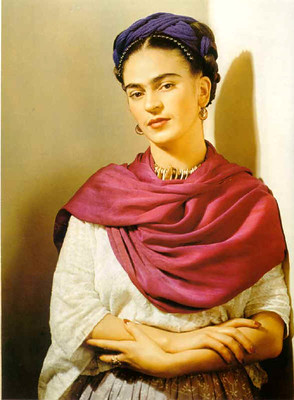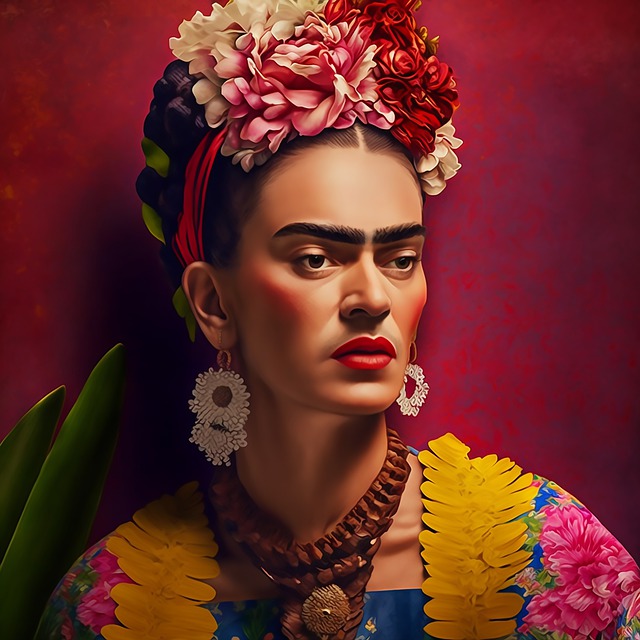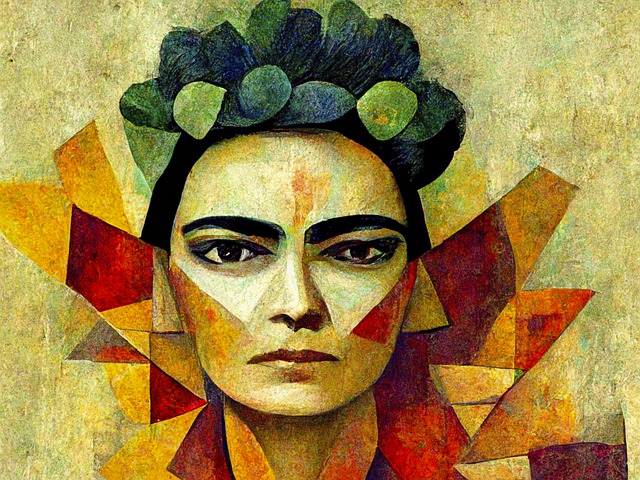15 Interesting Facts about Frida Kahlo for kids
Mexican artist Frida Kahlo was born in Coyoacán, Mexico City, in 1907.
She is well known for her self-portraits, many of which frequently showed her emotional and physical suffering.
Kahlo’s life was marked by significant physical suffering, including a near-fatal bus accident at the age of 18 that left her with lifelong injuries and chronic pain.
Despite this, she became a prolific artist, producing over 200 paintings, primarily self-portraits, that have since become iconic representations of Mexican art.
Kahlo’s work is known for its vivid colors, surrealist imagery, and emotional intensity, and it continues to inspire artists and admirers around the world.

Who is Frida Kahlo?
Frida Kahlo was a Mexican artist who achieved international recognition for her unique and highly personal style of painting.
Born in 1907 in Coyoacán, Mexico City, Kahlo began painting as a teenager while recovering from a near-fatal bus accident that left her with chronic pain and disabilities.
Her self-portraits, in which she frequently showed her physical and emotional hardships, came to be recognized as the essence of her creative endeavors.
Kahlo’s art was deeply influenced by Mexican folk art, as well as by her own experiences and struggles, and it often featured surrealist imagery and vivid colors.
Despite facing numerous challenges throughout her life, including a tumultuous relationship with the artist Diego Rivera, Kahlo persevered and created a body of work that continues to inspire and captivate audiences around the world.
Fun facts about Frida Kahlo
1. Frida Kahlo was born and died in the same house:
Born on July 6, 1907, in the Blue House in Coyoacán, Mexico City, Frida Kahlo lived most of her life there and eventually passed away on July 13, 1954, in the same house, which has since been transformed into the Frida Kahlo Museum, allowing visitors to learn more about her life and work.
2. She was named after her father:
Magdalena Carmen Frida Kahlo y Calderón was Kahlo’s full name, and she was named after her father, Guillermo Kahlo, who was a German-Hungarian photographer. Interestingly, Frida later dropped the name Magdalena and simply went by Frida Kahlo.
3. Frida was a talented athlete:
Kahlo was an accomplished athlete in her youth and competed in several sports, including swimming, boxing, and wrestling. She also played soccer and was a member of the Mexican national team.
4. Frida had a pet deer:
Frida Kahlo kept a pet deer, named Granizo, whom she would often take on walks around her garden, and he became a beloved companion of hers.
Kahlo’s love for animals is reflected in her paintings, and Granizo even appears in some of them, such as “The Wounded Deer.”
5. Her first art exhibition was held in New York:
Kahlo’s first solo exhibition took place at the Julien Levy Gallery in New York City in 1938, which turned out to be a success, as she sold half of the displayed paintings.
This exhibition marked a turning point in her career, and she went on to exhibit her work in many other prestigious galleries around the world.
6. Kahlo was fluent in several languages:

Frida Kahlo was a highly intelligent and multilingual person, and she was fluent in several languages, including Spanish, English, French, German, and Italian.
Her language skills enabled her to communicate with a diverse range of people from different cultures, which was important for her as an artist and a political activist.
Her proficiency in various languages allowed her to interact with people from diverse cultures and incorporate their perspectives into her art and activism.
7. She was an advocate for indigenous Mexican culture:
Kahlo was a proud advocate for Mexican indigenous culture and often wore traditional Mexican clothing in her paintings and her daily life.
8. Frida was a communist:
Frida Kahlo was a committed communist and held strong political beliefs, which were reflected in her art.
She and her husband, Diego Rivera, were active in the Mexican Communist Party and advocated for workers’ rights, indigenous rights, and gender equality.
9. She had an affair with Leon Trotsky:
In 1937, Kahlo and her husband, Diego Rivera, provided political asylum to the Russian revolutionary Leon Trotsky and his wife. Kahlo and Trotsky had a brief affair during this time.
10. Frida Kahlo had a unique fashion sense:
Frida Kahlo’s unique fashion sense was an extension of her personality and artistic expression.
She incorporated traditional Mexican clothing into her wardrobe, such as Tehuana dresses, rebozos, and huipiles, and often adorned herself with jewelry and flowers.
Her distinctive style has inspired fashion designers and artists around the world, and she remains an icon of individuality and self-expression.
11. She was an avid collector of folk art:
Kahlo collected a wide variety of Mexican folk art and used it as inspiration for her own paintings.
12. Kahlo’s artwork was heavily influenced by her physical and emotional pain:
Kahlo suffered from chronic pain and disabilities throughout her life, which often manifested in her art as depictions of physical and emotional suffering.

13. Frida painted on everything:
Kahlo’s paintings were not limited to canvas or paper. She also painted on objects such as plates, mirrors, and even prosthetic legs.
14. She had a passion for cooking:
Kahlo was an accomplished cook and often hosted dinner parties at the Blue House, where she would prepare traditional Mexican dishes for her guests.
15. Frida Kahlo’s legacy lives on:
Kahlo’s artwork continues to inspire and captivate audiences around the world, and her life and work have been the subject of numerous books, films, and exhibitions.
Conclusion
Frida Kahlo was an extraordinary artist whose life and work continue to captivate and inspire people around the world.
Despite facing numerous challenges throughout her life, including physical pain and disabilities, Kahlo persevered and created a body of work that is deeply personal, emotional, and deeply connected to Mexican culture.
Through her vividly colorful self-portraits, Kahlo expressed her innermost thoughts and feelings, creating powerful works of art that continue to resonate with audiences today.
Her legacy as an artist and cultural icon has only grown since she died in 1954, and she remains an inspiration to artists, feminists, and activists everywhere.
